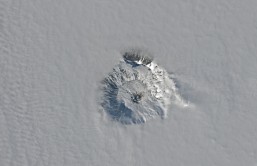A new study suggests dinosaurs were at their most vulnerable stage before the fatal asteroid impact struck earth roughly 66 million years ago.
Dr. Steve Brusatte, lead author of the study from Edinburgh University, worked with international palaeontologists to study the most current record of dinosaur fossils. Many of the remains were unearthed in North America. Using the data, they were able to map the evolution of dinosaurs millions of years prior to the asteroid impact.
Researchers found Earth was already experiencing environmental turmoil during that era - including huge volcanic activity, changing sea levels, and erratic temperatures - before the 10-km-wide asteroid landed on earth. This setting made the dinosaurs most vulnerable and unable to survive the aftermath.
"The dinosaurs were victims of colossal bad luck. Not only did a giant asteroid strike, but it happened at the worst possible time, when their ecosystems were vulnerable. Our new findings help clarify one of the enduring mysteries of science," Dr. Brusatte said.
The analytical tools also showed that even if dinosaurs did survive the impact, they would not last long because the food chain would be too heavily disrupted. Only species with wings managed to survive, which evolved to become modern-day birds.
The asteroid impact resulted in tsunamis, earthquakes, wildfires, varying temperatures and other environmental changes that likely made it impossible for dinosaurs to thrive.
But there is a positive result of the dinosaur extinction - mammals were subsequently able to expand and evolve, as well as develop advanced intelligence.
"There has long been intense scientific debate about the cause of the dinosaur extinction. Although our research suggests that dinosaur communities were particularly vulnerable at the time the asteroid hit, there is nothing to suggest that dinosaurs were doomed to extinction. Without that asteroid, the dinosaurs would probably still be here, and we very probably would not," said Dr. Richard Butler of the School of Geography, Earth and Environmental Sciences at the University of Birmingham.
Further details of the study were published in Biological Reviews.








